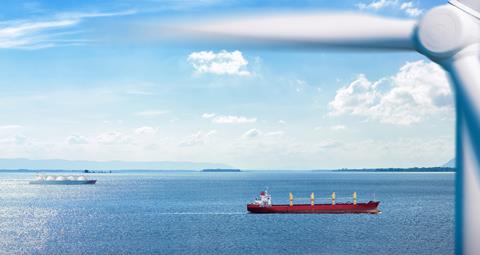Fuel choice will be the essential factor in shipping’s decarbonisation journey, according to DNV GL in its Maritime Forecast to 2050.

“The grand challenge of our time is finding a pathway towards decarbonisation,” said Knut Ørbeck-Nilssen, ceo of DNV GL – Maritime. “Reducing GHG emissions is rapidly becoming the defining decision-making factor for the future of the shipping industry. The pressure to act decisively is mounting. Perfect is the enemy of good, and so we must not wait for an ideal solution to arrive and risk making no progress at all.
“Using a wide range of scenarios involving different fuel types and technologies, and varying degrees of regulatory pressure, our new report helps to map a way forward, offering shipowners clear insights on how to meet the challenges and opportunities ahead.”
The industry is at the beginning of a transition phase, with many potential options emerging alongside conventional fuels. With an increasingly diverse fuel environment, shipping companies need to consider availability, prices and policy – making the choice even more complex.
The report looks at 30 scenarios and predicts the future fleet composition, energy use, fuel mix and CO2 emissions. 16 different fuel types and ten fuel technology systems are analysed in the forecast.
The scenarios with no decarbonisation ambitions see very-low sulphur fuel oil, marine gas oil (MGO) and LNG dominate. Whereas, scenarios under the decarbonisation pathways have a very different fuel mix: DNV GL predicts that in 2050 a variety of carbon-natural fuels will hold between 60 and 100 percent of the market share.
Under the decarbonisation models it is hard to identify clear winners among the many different fuel options. Fossil LNG gains a significant share until regulations tighten in 2030 or 2040. Bio-MGO, e-MGO, bio-LNG and e-LNG emerge as drop-in fuels for existing ships. By 2050, e-ammonia, blue ammonia and bio-methanol frequently end up with a strong share of the market and are the most promising carbon-neutral fuels in the long run, added DNV GL.
A surprising result from the model is the relative limited uptake of hydrogen as a ship fuel, as a result of both the estimated price of the fuel and the investment costs for the engine and fuel systems. Hydrogen, however, plays an integral role as a building block in the production of several carbon-neutral fuels such as e-ammonia, blue ammonia and e-methanol, all of which gain significant uptake under the decarbonisation pathways.
The International Energy Agency (IEA) came to a similar conclusion in its Energy Technology Perspectives 2020 report. It said that hydrogen is expected to play a large and varied role in helping the world reach net-zero emissions by forming a bridge between the power sector and industries where the direct use of electricity would be challenging, such as steel and shipping.
Many shipping companies have confirmed that they are exploring the viability of hydrogen, and fuels derived from it, as a possible fuel source for the future.
Speaking at the inaugural Maritime Transport Efficiency Conference in Geneva, Switzerland, shipping group MSC outlined some of its preferred future fuel options. The shipping line is actively bunkering biofuels at scale and believes that fossil-sourced LNG remains a transitional option. Carbon capture and storage, if perfected for marine use, could also be useful, added MSC.
Bud Darr, executive vice president maritime policy and government affairs at MSC Group, said: “There is no one single solution to decarbonise shipping, we need a range of alternative fuels at scale and we need them urgently.”
Industry partnerships could help accelerate the development of clean hydrogen for the benefit of the entire container shipping industry, he added. Despite some significant challenges to overcome – mainly related to density, volume and safe handling – MSC is in favour of further research and development to produce it in a GHG-neutral way and to develop it at scale, along with other fuels that may derive from it.
Collaborative efforts will be vital for the development of alternative fuels. In July 2020, the European Commission announced the EU Hydrogen Strategy and the launch of the European Clean Hydrogen Alliance. By establishing the alliance, the EU aims to initiate an investment agenda and support the scaling up of the hydrogen value chain across Europe.
Recently, offshore service provider DEME joined the alliance. Luc Vandenbulcke, ceo at DEME Group, added: “As a pioneer in the development, construction and financing of offshore wind farms, we want to make full use of our long-standing expertise for the production, transport and storage of green hydrogen from renewable energy sources.”
DEME has already entered into several green hydrogen partnerships internationally. In November 2019, DEME signed a cooperation agreement with six other leading industry players in Belgium for the transport of green hydrogen, and this year, also entered into exclusive partnerships to develop industrial scale green hydrogen plants in Belgium and in Oman.
















